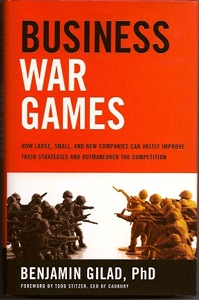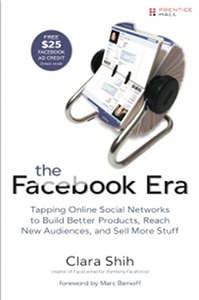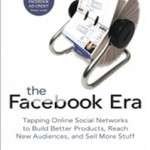Posted by Elena del Valle on April 17, 2009

Business War Games book cover
For 25 years Benjamin Gilad, Ph.D. has helped large companies design and run competitive games to make determinations about product and service launches and strategy. This year, the former associate professor published a 223-page hardcover book, Business War Games How Large, Small and New Companies Can Vastly Improve Their Strategies and Outmaneuver the Competition (Career Press, $19.99), designed to make this concept accessible to everyday business people and small companies.
What are war games? An increasingly popular approach to making decisions at the highest echelons of corporate America. These games provide executives a simulation, often relying on sophisticated computer modeling, expert consultants and extensive exercises, to anticipate results, and how customers and the competition will respond to a proposed project launch. The basic concept is to explore ideas that can later, if successful in the games, be implemented in the business and survive in the market.
Gilad believes war games need not be costly or rely on expensive consulting services. In the first chapter of the book, he proposes that the every business person facing a decision involving competitors should have access to the games experience. According to him, they provide a way for decision makers to asses and estimate market changes; test applicable strategies; create and test plans to target the markets of competitors or anticipate threats from competitors; and protect new products and services when they are introduced into the market.
To explain the concept and how to take advantage of it, he divided the book into four sections: From Sand Table to Boardroom, Competitors as Characters, Step-by-Step, and Running a Business War Game. Although he concedes that the term “business war games” may be deceptive since they are not really about wars, he argues that in lieu of a better term or acronym (he mentions IRS for Iterations of Rival Strategies among less desirable options) he prefers war games because it sounds like fun and having fun is one of the most important characteristics of these exercises.
Gilad, who ran war games for Fortune 500 companies for 25 years, has a Ph.D. in economics. A former associate professor of strategy at Rutgers University, he is the founder and president of the Academy of Competitive Intelligence.

Business War Games
Click here to buy Business War Games
Comments:
Filed Under: Books
Posted by Elena del Valle on April 15, 2009
By Barbara L. Allan
CEO, SRA Research Group Inc.

Barbara Allan
Photo: SRA Research Group, Inc.
SRA Research Group, Inc. (SRA) has found, in the 15 plus years we have been conducting primary research regarding Hospice that most people have heard of it. Despite this, many don’t really know what it means or what it provides. This is because Hospice falls into the category of “I don’t need it now so I don’t need to know more about it.” This category of people simply have no desire to learn more.
Once a family comes to grips with the realization that a loved one may require Hospice care, the door opens. However, we have found the door does not open as wide for Hispanics as it does for white non-Hispanics.
Click here to read the complete article
Listen to Cesar Melgoza discuss
“Changing Latino Landscape” audio recording

Presenter Cesar Melgoza, managing director, Latin Force Group
Find out about
• How demographic, social, political and economic factors affect Latinos
• Number of Hispanics in U.S.
• Hispanics as a percent of the mainstream population
• Number of Puerto Ricans in Puerto Rico
• Hispanics, including Puerto Rico, as a percent of U.S. mainstream
• Number of Asians and African Americans
• Estimated size of Hispanic market by 2012
• Percentage growth of new Hispanics per year
• Number of counties where Latinos are majority
• Areas of significant Latino growth
• Area of U.S. with a 950 percent Latino growth
• Role of acculturation
• Hispanicity segmentation
Click here for information on the Changing Latino Landscape
Posted by Elena del Valle on April 13, 2009

Harry Pachon, president and chief executive officer, Tomas Rivera Policy Institute
Photo: Tomas Rivera Policy Institute
Between 2005 and 2006 the number of Voice over Internet Protocol (VoIP) subscribers grew 189 percent from 1.9 million to 5.5 million, proof of the increasing popularity of the Internet based telecommunications option. Although making phone calls online can be a cheap alternative to traditional phone company services, and many Latinos are familiar with VoIP service providers and think the service can offer lower telephone costs, most of the respondents of a recent study have not embraced the technology because they are unfamiliar with how it works or how it can benefit them.
A report by the Tomás Rivera Policy Institute (TRPI) at the University of Southern California indicates for communication services, VoIP adopters spend an average of 13 percent less per month than Internet connectors who do not use VoIP. In addition, VoIP calling rates, especially for international service, are significantly lower than the fees charged by conventional phone service providers.
“Providers of VoIP services are successful in whetting Latinos’ appetites for new and cheaper telecommunication services; but to help individuals and families make the leap and adopt these services, it is going to take well orchestrated efforts to educate and familiarize them with the technology. In this quest, it is critical to form partnerships, especially at the local level, among public, private and non-profit organizations,” said Matthew D. Matsaganis, Ph.D. who authored the report.
As part of the study funded by Zero Divide, Social Impact of Voice over Internet Protocol on Latinos, researchers examined Latino awareness and perceptions of VoIP and Internet-based phone services; Latino attitudes about and use of landline phones, cell phones, computers and the Internet; and how much Latino VoIP users pay for communication services compared to those Latinos who do not rely on VoIP options.
The report is divided into four main parts that outline the VoIP market, provide information about the benefits of VoIP technology and the state of VoIP, as well as VoIP usage among Latinos and related issues.The report presents implications and policy recommendations to improve education, access, and research for Latinos using Internet-based telephony.
“VoIP could help Latino immigrants connect with their homeland families and friends at a relatively low cost,” said Harry Pachon, Ph.D., president of TRPI and professor of Public Policy at the University of Southern California. “However, lower rates of home computer use by Latinos negatively impact the adoption of these less costly VoIP services.”
Founded in 1985, the Tomás Rivera Policy Institute (TRPI) mission is to advance informed policy on “key issues affecting Latino communities through objective and timely research contributing to the betterment of the nation.” TRPI is an affiliated research unit of the University of Southern California School of Policy, Planning, and Development, and is associated with the Institute for Social and Economic Research and Policy at Columbia University.
“Moving Beyond Traditional Media Measurement: measuring conversations and social media” audio recording

Presenter Katie Delahaye Paine, founder, KDPaine & Partners
Find out about
- Issues affecting online public relationships today
- Testing relationships as part of a survey
- Measuring ethnic group relationships
- Measuring foreign language communications in a similar ways to English
- Biggest challenges measuring conversations and social media
- Measuring online relationships with little or no money
Click here for information on “Moving Beyond Traditional Media Measurement”
Posted by Elena del Valle on April 10, 2009

The Facebook Era book cover
Photos: Prentice Hall Professional
For people interested in reaching prospects online social networking, especially websites like Facebook with 150 million members, may offer a desirable target. That forum is so large 400,000 developers have created 24,000 applications for the system. The same characteristic that makes Facebook desirable, its many members, makes tapping it daunting. Social networking advocates believe that because university graduates are accustomed to social networking from their college days and may continue their use as they enter the workforce making social networking sites indispensable as a future business tool. At the same time, eager new users question the tangible long term business benefits of social networking and wonder how they should get started.
This year, a new expert joined the many fans of social networking with a “how to” guide. Clara Shih wrote The Facebook Era: Tapping Online Social Networks to Build Better Products, Reach New Audiences, and Sell More Stuff (Prentice Hall Professional, $24.99) to share suggestions about how business people can leverage social networking to change the way they do business and profit from it.
The 236-page paperback book includes a 60-day action plan to help readers benefit from using social networks. It is divided into 12 chapters in three main parts: A Brief History of Social Media, Transforming the Way We Do Business, and Your Step By Step Guide to Using Facebook for Business. In the first section she examines the current state of social networking; she then explores ways in which specific company areas can benefit from social forums; and in the last four chapters she provides suggestions to implement the ideas she presented in the previous section.

Author Clara Shih
Shih created Faceconnector (formerly Faceforce), one of the first business applications on Facebook. She is also product line director of AppExchange, salesforce.com’s online marketplace for business software-as-a-service applications built by third-party developers. Previously, the author worked in strategy and business operations at Google, and before that as a software developer at Microsoft.
She is the founder and serves on the board of directors of Camp Amelia Technology Literacy Group, an East Palo Alto, California-based 501(c)(3) nonprofit that develops and distributes technology education software and curriculum. Clara holds undergraduate and graduate degrees in economics and computer science from Stanford, and has a Master’s Degree in Internet studies from Oxford, where she was as a United States Marshall Scholar.
Her first book, Using New Media, was commissioned by UNESCO to help teachers, parents, and school administrators in developing countries use digital media to adopt best practices and distribute high-quality content and curriculum. Shih is an immigrant to the United States from Hong Kong and learned English as a second language.

Facebook Era book cover
Click here to buy The Facebook Era
Comments:
Filed Under: Books
Posted by Elena del Valle on April 9, 2009
Information provided by our Event Partner
I
Hispanic Retail 360
Hispanic Retail 360 is the retail industry’s premier event for retailers in all channels and marketers looking to grow their business with the Latino consumer market in the U.S.
This Year’s Event to Feature:
* Debut of Nielsen national research on Hispanics and the Economy Today. Experts from the Nielsen Company will review how Hispanics are faring in these difficult times.
* A special retailer panel, moderated by strategic analyst Art Turock, will explore innovation in addressing Hispanic shoppers through “how-to” stories and advanced insights from prominent retailers who are leaders in marketing and serving Latino shoppers.
To view the complete agenda and get additional information go to: www.hispanicretail360.com
HispanicMPR subscribers discount: $599/retailers, $899/non-retailers (does not expire)
The promo code to register is: HISMPR
For questions on registration contact Brittany Davies at 646-654-5883 or at brittany.davies@nielsen.com
Posted by Elena del Valle on April 8, 2009
By Alejandro Alvarado Ph.D.

Alejandro Alvarado
Photo: Alejandro Alvarado, Ph.D.
My relationship with the Hispanic media started in 1995, as a member of a group of journalists that broadcasted news to Latin America through Telenoticias, a venture that combined investments from Reuters, Telemundo, Grupo Clarín and Atena 3; and that later became CBS Telenoticias and Telemundo International1.
That was the beginning of my immersion and acculturation into the values of journalism in a democracy where freedom of expression prevails. It was also the catalyst for my connections with journalists from all over Latin America and Hispanics born in the United States with strong ties to their Latin roots. This experience was my key to understanding this fascinating phenomenon called the Hispanic media.
Working in Latin American broadcasting based in the United States, I understood the challenging situation in which Hispanic journalist live, having to be experts in both the United States and the Caribbean, Mexico, Central and South America.
Click here to read the complete article
“Best in Class Hispanic Strategies” audio recording


Presenters Carlos Santiago and Derene Allen
-
Find out what makes 25 percent of the top 500 Hispanic market advertisers out perform the remaining companies
-
Discover what questions to ask, steps to take to be a Best in Class company
Click here for more about “Best in Class Hispanic Strategies” audio recording
Posted by Elena del Valle on April 6, 2009

Edgar Ochoa, original programing director, AOL Latino
Photo: AOL Latino
A podcast interview with Edgar Ochoa, original programming director, AOL Latino and AOL Mexico, is available in the Podcast Section of Hispanic Marketing & Public Relations, HispanicMPR.com. During the podcast, Edgar discusses AOL’s new Spanish language website and his company’s efforts to target United States Latinos with Elena del Valle, host of the HispanicMPR.com podcast.
Edgar is responsible for the creation, development and execution of original programs for AOL Latino and AOL Mexico dedicated local web portals in five Latin American markets, Mexico, Argentina, Colombia, Venezuela and Chile. Edgar is also involved with developing original programs for advertising clients for AOL Latino and AOL Latin America.
Prior to joining AOL in early 2008, Edgar served as account director at SpikeDDB, where he managed the Frito Lay and Royal Caribbean International accounts, as well as various agency projects for Turner Network Television and Acuvue Contact Lenses. Before joining SpikeDDB, Edgar was account supervisor with Mosaica, a Young & Rubicam Hispanic ad agency, where he managed campaigns directed at the Hispanic market. He began his career with The Innova Group, a Yankelovich Partners affiliate in Mexico and Argentina, where he was part of the team that launched the Yankelovich Mexico Monitor.
Edgar received a Bachelor in Science in advertising and a Masters in Business Administration in marketing from the University of Florida. He is fluent in Spanish and French.
To listen to the interview, scroll down until you see “Podcast” on the right hand side, then select “HMPR Edgar Ochoa,” listen to it on your cell phone through VoiceIndigo (click on the Mobilize button), click on the play button below or download the MP3 file to your iPod or MP3 player to listen on the go, in your car or at home. To download it, click on the arrow of the recording you wish to copy and save it to disk. The podcast will remain listed in the April 2009 section of the podcast archive.
Reach Hispanics online today with
“Marketing to Hispanics Online” audio recording
Identifying and characterizing the booming Hispanic online market



Joel Bary, Alex Carvallo and Matias Perel
Find out about
• The 18 million Latino online users
• Latino online users by gender
• What they do online
• Their language preferences
• How to reach Hispanic urban youth online
• What affects their online behavior
• What influences their purchases
Click here for information about “Marketing to Hispanics Online”
Posted by Elena del Valle on April 1, 2009
By Georgia Hedrick

Author Georgia Hedrick
Kids need heroes here in the West. Real heroes. We need those who fight for justice and fairness and an honest day’s wage. Once upon a time, long ago, the movies or the music industry or sports were where the kids from the 50’s, 60’s, 70’s looked for role models. Those days are gone. We learned: those people were just icons to look at, and not heroes to imitate. They were never possible to imitate. In many cases, they should never have been imitated. Time taught us these facts.
March 31st was Cesar E Chavez’s birthday. Here is a man worthy of study, and imitation. Up from the heart of the West comes this hero. Struggling in a large family in Yuma of the Depression, always searching for work, the Chavez Family ‘followed the crops’. From Arizona through the length of California, they worked, they went to school, and they learned about injustice. Poorly paid, overworked, and feeling the discrimination of the wealthier classes, they persisted in being who they were, a family who would one day make a difference.
Click here to read the complete article.
“Best in Class Hispanic Strategies” audio recording


Presenters Carlos Santiago and Derene Allen
-
Find out what makes 25 percent of the top 500 Hispanic market advertisers out perform the remaining companies
-
Discover what questions to ask, steps to take to be a Best in Class company
Click here for more about “Best in Class Hispanic Strategies” audio recording
Posted by Elena del Valle on March 30, 2009

A CBP Border Patrol agent scans the area with binoculars
Photo: James Tourtellotte
Crouching in the bushes, silently hiding from men in uniforms with search lights a group of 20 people listen to a loud warning in Spanish with a thick American accent. Someone runs but he is caught, dropped to the ground and interrogated before being “deported.” The remaining “immigrants” wait a few minutes before crawling under the fence into the darkness and freedom.
Although it is meant to simulate hundreds or thousands of real scenes that take place across the 2,000 mile border that divides the two countries, the activity really takes place 500 miles south of the United States-Mexico border in the village of El Alberto. The people participating in the night time event are really curious travelers to Mexico wanting a glimpse of what undocumented immigrants from Mexico experience when attempting to cross north of the United States-Mexico border in search of a better life.
A group from the small Hnahnu Indian community of El Alberto in the Mezquital valley makes this activity available to tourists for a fee. The Hnahnu representatives that play smugglers, border patrol agents, deportees and other performers are volunteers. This part of Mexico is, according to a recent article in Guardian.co.uk, is known for its poverty, water contamination, and many immigrants to the United States. Increased border security and the worsening recession have made it increasingly difficult to find jobs for new arrivals to the United States so leaders of El Alberto have found a way to generate revenue and provide tourist entertainment.
The “show” is led by a representative of El Alberto in the role of a coyote or smuggler before the tourists head down to the river bank while border patrol car siren wails in the background. If the visitors are in good physical shape they may continue another six hours moving from one side of the river to the other constantly. Others may complete the experience in one hour. Apparently, even the simplest version includes a walk along a high wall (30 feet) without exit in sight.
Listen to Cesar Melgoza discuss
“Changing Latino Landscape” audio recording

Presenter Cesar Melgoza, managing director, Latin Force Group
Find out about
• How demographic, social, political and economic factors affect Latinos
• Number of Hispanics in U.S.
• Hispanics as a percent of the mainstream population
• Number of Puerto Ricans in Puerto Rico
• Hispanics, including Puerto Rico, as a percent of U.S. mainstream
• Number of Asians and African Americans
• Estimated size of Hispanic market by 2012
• Percentage growth of new Hispanics per year
• Number of counties where Latinos are majority
• Areas of significant Latino growth
• Area of U.S. with a 950 percent Latino growth
• Role of acculturation
• Hispanicity segmentation
Click here for information on the Changing Latino Landscape
Posted by Elena del Valle on March 27, 2009

Bacardi and the Long Fight for Cuba book cover
In Bacardi and the Long Fight for Cuba: The Biography of a Cause (Viking, $27.95) Tom Gjelten, a correspondent for international issues for National Public Radio (NPR), uses a literary magnifying glass to examine the history of five generations of the Bacardi family, world famous rum makers exiled from Cuba. The 413-page hardcover book, published in 2008, is divided into 23 chapters tracing 150 years of the family from the 1860s to the post-Castro era.
The idea for the book was born in 1999 as a way to tell the modern story of Cuba with a new twist, and Gjelten began writing it in 2003. He believes the Bacardis had the type of forward thinking community oriented mentality the island needed and failed to produce.
In the process of researching and writing the book he interviewed 100 people and conducted extensive archival research in Santiago and Havana, Cuba as well as Washington, D.C. and Miami, Florida. He traveled to Cuba 15 times and dedicated many weeks to the project in South Florida.
Gjelten believes the salient aspect of his findings is that although the Bacardi family business remains almost 100 percent family owned the company has survived through five generations of the family, and is thriving as a modern multinational company. The book has two sections of black and white photos of the Bacardi family, factories, buildings and people, including Fidel Castro and Che Guevara.
Gjeltenis, a resident of Arlington, Virginia, is a regular panelist on Washington Week, a PBS radio program. He received George Polk, Robert F. Kennedy and Overseas Press Club awards for his journalistic work from the former Yugoslavia. Prior to Bacardi and the Long Fight for Cuba, he wrote Sarajavo Daily: A City and its Newspaper Under Siege.

Bacardi and the Long Fight for Cuba book cover
Click here to buy Bacardi and the Long Fight for Cuba
Comments:
Filed Under: Books






























